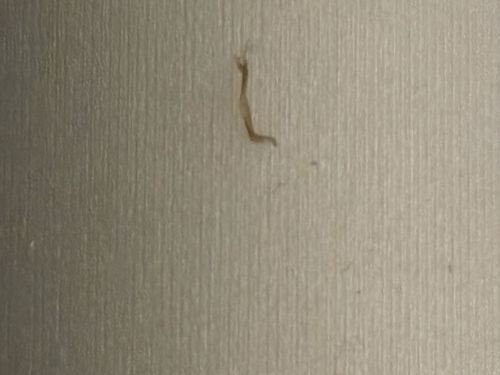Case-bearing Clothes Moth (Larva)
Scientific Name: Tinea pellionella (Larva)
Order & Family: Lepidoptera, Tineidae
Size: Larvae are typically 10-14 mm (0.4-0.55 inches) long when fully grown. The case itself can vary in size depending on the larval stage.

Natural Habitat
Indoors, commonly found in dark, undisturbed areas such as closets, attics, storage chests, and under furniture. They infest textiles, carpets, upholstered furniture, and stored fabrics, particularly those of animal origin.
Diet & Feeding
Larvae feed on natural fibers, including wool, silk, fur, feathers, felt, and other animal products. They can also infest dried fruits, seeds, and animal carcasses. They are particularly attracted to soiled materials containing perspiration or food stains.
Behavior Patterns
Case-bearing clothes moths are known for the protective silken case they construct around themselves. The larva carries this case with it as it moves and feeds, enlarging it as it grows. They are slow-moving and often found crawling on surfaces. Adults are rarely seen flyers and prefer to crawl or hop. They are attracted to light but avoid direct light. The larval stage is the damaging stage, feeding on natural fibers.
Risks & Benefits
Risks: Significant pest of textiles, causing damage to clothing, carpets, and other natural fiber items. Benefits: In natural ecosystems (outside of homes), they contribute to breaking down natural organic materials, but typically considered a nuisance pest in human environments.
Identified on: 9/3/2025